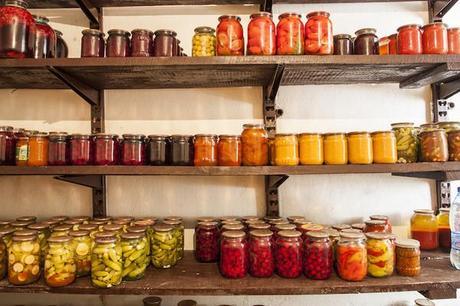
Whether you want to prolong the use of organic fruits and veggies from your own garden, you're trying to save dough with a DIY mentality, or you're looking for other ways to engage in food preservation, becoming a prepper means finding ways to be frugal, industrious, and self-reliant. Canning, jamming, and other types of food preservation definitely fit the bill.
But these homemade methods of food preservation have largely fallen out of practice. And unless you want to muddle through learning this lost art on your own, it couldn't hurt to have some guidelines, tips, and tricks to help you master the canning and food preservation process.
- Order bulk mason jars. Mason jars are the gold standard when it comes to canning and jamming, and that’s thanks to the ease of sterilization and the ability to get an airtight seal. Best of all, they can be reused (although it's best to replace lids, which can deteriorate during the first canning). So if you end up sampling some of your jars or they are near expiration and you have to replace them with a new batch, you won't have to spend more money on containers.
- Locate recipes. You may have old family recipes you're interested in trying out, but keep in mind that canning methods have been refined over the years. And thanks to scientific research, we now know the best methods to avoid contamination and the growth of common toxins like botulism. So you might want to make sure any recipes you use are updated to meet modern standards for safety.
- Know your altitude. The altitude of your location can affect the timing required to ensure safe canning practices. So take the time to determine your altitude and adjust accordingly for optimum safety.
- Water bath canning. This method of canning works best with foods that feature a high level of acidity, such as fruits and pickled items. Anything with a pH under 4.6 should be safe to can by the water bath method, which involves immersing sterilized jars in boiling water for the recommended amount of time (it may differ by content, altitude, and so on).
- Pressure canning. This type of canning is preferred for low-acidity foods (with a pH higher than 4.6) and involves a specialized piece of equipment called a pressure canner, which is not to be confused with a pressure cooker. If the acidity is too low, the risk for botulism increases, so it's important to choose the proper method of canning for your wares.
- Sugar alternatives. Despite popular belief, sugar is not used as a preservative for canning. But it does help with color fastness and it can make tart fruits taste better. However, you might want to look for recipes that use honey or other natural sweeteners instead of processed sugar; they're more sustainable and better for your health.
- It's important to leave adequate space unfilled at the top of the jar when canning for two reasons. First, the contents of your jar can expand under heat. If the jar is too full, the pressure could cause it to explode. Second, leaving headspace in your jars ensures that as the air inside cools, a proper vacuum seal is established. This helps to prevent contamination.
- Expiration dates. Canned foods bought at the store will be marked with an expiration date, but your homemade goods have no such measure of reliability. For this reason, it's important to label jars with the date that they were created. In optimal conditions (a cool, dry place like a root cellar, for example), canned foods can be reliably stored for up to a year.
The best way to stay up-to-date with usage is by practicing FIFO - first in, first out. Jars with the oldest dates should be kept at the front of shelves while newer ones are stacked behind them sequentially by date. - Start with small batches. If you're new to the canning and jamming world, start with small batches of just a couple pounds of produce. Even with reliable recipes, you might have some hiccups along the way. Until you refine your process, you don't want to waste dozens of pounds of produce should you make a mistake.
- Use the best produce. If you want your canned goods to come out tasting delicious months after the time they’re canned, it's important to select produce that is ripe and ready to eat, rather than jumping the gun with "green" items or waiting until fruits and veggies are going soft.





